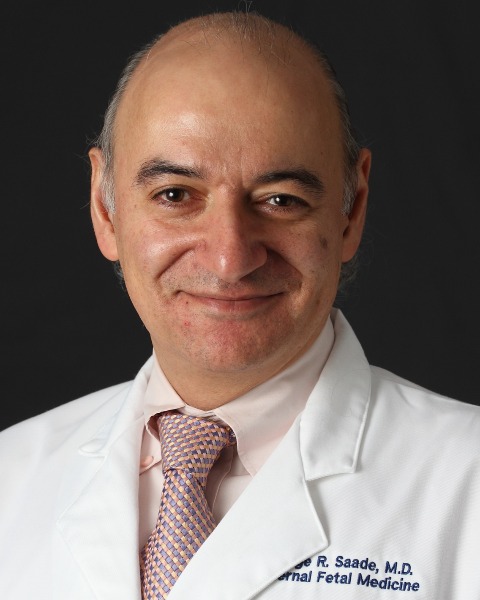Clinical Obstetrics
Poster Session 3
(916) Nutrition Pattern and Adverse Pregnancy Outcomes in nulliparous individuals: A cluster analysis

Yara Hage Diab, MD
Eastern Virginia Medical School
Norfolk, VA, United States- ko
kazuma onishi, MD
Eastern Virginia Medical School
Norfolk, VA, United States 
George R. Saade, MD (he/him/his)
Professor & Chair of Ob-Gyn
Eastern Virginia Medical School
Norfolk, VA, United States
Tetsuya Kawakita, MD, MS
Assistant Professor
Eastern Virginia Medical School
Norfolk, VA, United States
Primary & Presenting Author(s)
Coauthor(s)
Study Design: This was a secondary analysis of the Nulliparous Pregnancy Outcomes Study: Monitoring Mothers-to-Be. The primary outcome was a composite of preterm birth, stillbirth, eclampsia, preeclampsia, gestational hypertension, and small for gestational age. An unsupervised machine learning algorithm was developed (k-means). A total of 335 clustering variables were considered. The proportion of the primary outcome was examined within each cluster. Multivariable logistic regression was performed to obtain adjusted odds ratios (aOR) with 95% confidence intervals (95%CI), controlling for predefined confounders.
Results:
Of 7074 individuals, there were 2593 (36.7%) in cluster 1, 546 (7.7%) in cluster 2, and 3935 (55.6%) in cluster 3. Cluster 2 was associated with increased odds of adverse pregnancy outcomes (22.4% vs.31.3%; aOR 1.35 [95%CI 1.06-1.71]) and gestational diabetes (3.9% vs.6.0%; aOR 1.86 [95%CI 1.15-3.01]). Cluster 3 was not associated with adverse pregnancy outcomes (22.4% vs. 25.6%; aOR 1.13 [95%CI 0.99-1.29]). Cluster 1 was characterized by higher intake of vitamin E, vitamin A, fruits, vegetables, and green salad. Cluster 2 was characterized by higher intake of trans-fat, polyunsaturated fatty acids, red meat, sugar beverages, and theobromine intake. Cluster 3 was characterized by lower intake of vitamin E, vitamin A, vegetables, fruits, and fat or oil consumption.
Conclusion:
We were able to use machine learning to categorize food intake into clusters, each with its own risk of adverse pregnancy outcome. Food intake pattern that is characterized by higher intake of trans-fat, polyunsaturated fatty acids, red meat, and sugar beverage intake was associated with adverse pregnancy outcomes.

